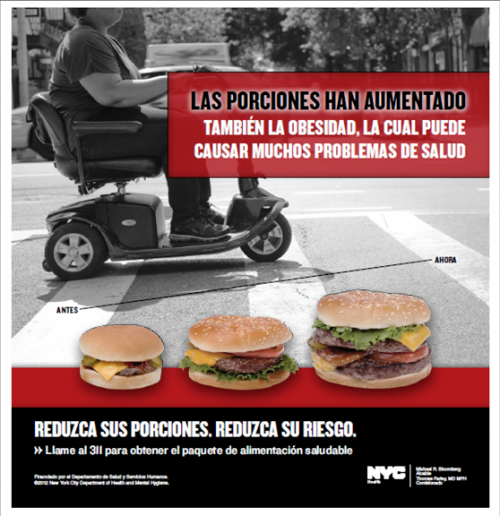Soda taxes and other measures designed to fight obesity
My once-a-month (first Sunday) Q and A column in the San Francisco Chronicle deals with recent city initiatives.
Q:Why do municipalities continue to try to tell us what to eat or drink through taxes (the 1-cent soda tax on the Richmond ballot in November) or outright bans (eliminating super-size soft drinks, proposed by Mayor Michael Bloomberg in New York)? Richmond residents could just buy their sodas in neighboring towns, and 1 cent seems hardly enough to influence anyone. New Yorkers could just buy two drinks if they want more. Isn’t this all rather silly?
A: Silly? On the contrary. These are dead-serious attempts to address the health problems caused by obesity through “environmental” change – changing the context in which we make food choices.
By now, health officials are well aware that asking individuals to take responsibility for making their own healthy food choices hasn’t got a prayer of success in the face of a marketing environment that encourages people to eat everywhere, all day long, in very large portions and at relatively low cost.
This is the default food environment, where it’s useless to tell people they need to eat less and expect them to do it. They can’t. Instead, it makes sense to try to change the food environment to make healthy choices the easy choices.
Healthy by design?
Suppose, for example, that all kids’ meals at fast-food restaurants were healthy by design and automatically provided milk or water.
You could still order a soda for your kid, but you would have to ask for it – and pay extra. If you are like most people, you won’t bother. That’s why the default matters.
Cities are trying to change the default. One change may or may not make a difference – we don’t know that yet. But changing the default might well make healthy choices easier in schools, fast-food restaurants and other institutions.
Bloomberg’s proposal in New York, to ban sodas larger than 16 ounces, is one such step. From my standpoint, 16 ounces is generous. It’s two full servings and provides about 50 grams of sugars, 200 calories and 10 percent of daily calories for someone who consumes 2,000 calories a day.
Portion sizes used to be a lot smaller. Decades ago, Coca-Cola advertised 16-ounce bottles as “big” and enough to serve three over ice.
If we could recognize that larger portions have more calories – and act on this knowledge – we might have an easier time maintaining weight. But we can’t, at least not easily.
The Richmond soda tax proposal recognizes that more than half of Richmond schoolchildren are overweight or obese. This percentage is higher than in other areas of Contra Costa County.
Even more striking, city officials estimate that two-thirds of Richmond adolescents consume more than 400 calories a day from soft drinks.
Kids who habitually drink sugary sodas tend to have worse diets, to be fatter and to display more risk factors for chronic diseases than kids who don’t.
This makes sugar-sweetened beverages an obvious target for environmental approaches to obesity prevention. Sugary sodas have calories but no nutrients. They are consumed in large amounts. They are highly correlated with obesity and health risks. They are “liquid candy.”
Sugary drinks should be once-in-a-while treats, not daily fare.
Richmond officials hope that the tax will encourage healthier choices. They deliberately set the proposed tax small so it would not unduly burden low-income residents.
One penny per ounce – 16 cents on a 16-ounce soda – may not be enough to change behavior, but it sends a clear message: It’s less expensive to drink water, and it’s healthier to reduce soda intake.
Funding programs
The Richmond proposal has one other critically important feature. It specifies that soda tax revenue will be used to fund city programs to address and reduce childhood obesity, especially in low-income areas where obesity rates are high.
These experiments are worth national attention. They may well do some good for individuals, and I can’t see how they would cause harm in any way except, perhaps, to the economic interests of soda companies.
Soda companies are taking these initiatives seriously. They are pouring millions of dollars into lobbying and community campaigns against both proposals.
Both have elicited plenty of public discussion, much of it focused on the rights of individuals versus the public health interests of government.
What I like about these initiatives is that they do not infringe on individual rights – people can buy as much soda as they want. The proposals simply try to make the default food environment slightly more conducive to healthy choices.
I’m hoping both proposals go forward. I can’t wait to see how they play out.



